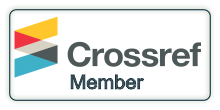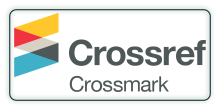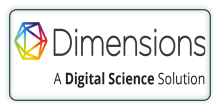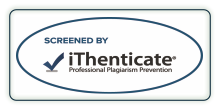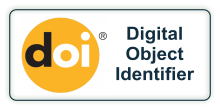POST MARKET CLINICAL EVALUATION OF MEDICAL DEVICES INTEGRATING HEALTH ECONOMICS AND ARTIFICIAL INTELLIGENCE FOR IMPROVED OUTCOME.
DOI:
https://doi.org/10.29121/ijetmr.v12.i4.2025.1569Keywords:
Post-Market Surveillance, Medical Devices, Health Economics, Artificial Intelligence, Clinical Outcomes EvaluationAbstract
The post-market clinical evaluation of medical devices plays a crucial role in ensuring long-term safety, performance, and regulatory compliance. With the evolving landscape of healthcare, manufacturers and regulatory bodies are increasingly focusing on real-world evidence, post-market surveillance, and health economics to assess the value and impact of medical technologies. This paper explores the significance of post-market clinical evaluation, the role of health economics in determining cost-effectiveness and reimbursement strategies, and the transformative potential of artificial intelligence (AI) in streamlining data analysis and decision-making.
Health economic assessments provide insights into the financial and societal impact of medical devices, influencing regulatory approvals and market adoption. Simultaneously, AI-driven analytics enhance post-market surveillance by detecting adverse events, predicting device performance, and optimizing clinical outcomes. By integrating these elements, stakeholders can improve patient safety, ensure cost efficiency, and foster innovation in medical device development.
This study highlights the synergies between post-market clinical evaluation, economic assessments, and AI applications, offering a comprehensive framework for manufacturers and regulators to enhance the lifecycle management of medical devices in an increasingly data-driven healthcare environment.
Downloads
References
Angelis, A., Kanavos, P., & Montibeller, G. (2018). Resource Allocation and Priority Setting in Health Care: A Multi-Criteria Decision Analysis Problem of Equity, Efficiency and Access. Expert Review of Pharmacoeconomics & Outcomes Research, 18(1), 5–12.
Bano, A., Künzler, J., Wehrli, F., Kastrati, L., Rivero, T., Llane, A., Valz Gris, A., Fraser, A. G., Stettler, C., Hovorka, R., Laimer, M., Bally, L., & CORE‐MD investigators. (2024). Clinical Evidence for High-Risk Ce-Marked Medical Devices for Glucose Management: A Systematic Review and Meta-Analysis. Diabetes Obesity And Metabolism, 26(10), 4753–4766.
Califf, R. M., Hernandez, A. F., & Landray, M. (2020). Weighing the Benefits and Risks of Medical Devices: The Importance of Real-World Evidence. JAMA, 323(6), 495–496.
Chernyshov, P. V., Zouboulis, C. C., Tomas‐Aragones, L., et al. (2018). Quality of Life Measurement in Acne: Position Paper of the EADV Task Forces. Journal of the European Academy of Dermatology and Venereology, 32(2), 194–208.
Drummond, M., Sculpher, M., Claxton, K., Stoddart, G., & Torrance, G. (2015). Methods for the Economic Evaluation of Health Care Programmes (4th ed.). Oxford University Press.
Elshikh, M. S., Alwahibi, M. S., Alexiou, A., Papadakis, M., et al. (2024). Soil Pollution: An Agricultural and Environmental Problem with Nanotechnological Remediation Opportunities and Challenges. Discover [Journal Name]. Springer.
Esteva, A., Robicquet, A., Ramsundar, B., et al. (2019). A Guide to Deep Learning in Healthcare. Nature Medicine, 25(1), 24–29.
European Commission. (2020). MDR - Medical Device Regulation (EU) 2017/745.
European Medicines Agency (EMA). (2021). Reflection Paper on the use of Artificial Intelligence (AI) in the Medicinal Product Lifecycle.
FDA. (2021). ARtificial Intelligence and Machine Learning in Software as a Medical Device.
Food & Drug Administration, HHS. (2018). Medical Devices; Exemption from Premarket Notification, Class II devices, over-the-counter denture repair kit. Federal Register, 83(50), 11144–11145.
Galli, V., Golia D'Augè, T., DI Pierro, F., et al. (2024). Safety and Efficacy of a class II Medical Device Based on Plant Extracts in Vulvar and Vaginal Atrophy. Minerva Obstetrics and Gynecology, 76(4), 343–352.
Garrison, L. P., Neumann, P. J., Willke, R. J., et al. (2018). A Health Economics Approach to US Value Assessment Frameworks. Value in Health, 21(2), 161–165.
Guney, T., & Yazici, A. R. (2018). 24-Month Clinical Evaluation of Different Bulk-Fill Restorative Resins in Class II restorations. Medical Devices (Auckland), 83(108), 25910–5.
Hoshino, I. A., Fraga Briso, A. L., Bueno Esteves, L. M., et al. (2022). Clinical Trial of Class II Restorations using Flowable Bulk-Fill Resin Composites: 4-year follow-up. Clinical Oral Investigations, 26(9), 5697–5710.
IMDRF. (2022). Real-World Evidence (RWE) Working Group Documents.
Kitonakis, N., & Kontis, A. (2008). The Determinants of Greek Foreign Direct Investments in Southeast European countries. Southeast European and Black Sea Studies.
Kuo, C., & Liu, X. (2020). The Integration of AI and Machine Learning in Medical Device Clinical Evaluations. Medical Device Regulatory Review, 16(2), 99–112.
Liakou, A. I., & Zouboulis, C. C. (2015). Links And Risks Associated with Psoriasis and Metabolic Syndrome. Psoriasis (Auckland), 5, 125–128.
Liakou, A. I., Theodorakis, M. J., Melnik, B. C., et al. (2013). Nutritional Clinical Studies in Dermatology. Journal of Drugs in Dermatology, 12(10), 1104–1109.
Liakou, C. I., & Plytas, M. (2025). Patient Access to High-Risk Devices. International Journal of Engineering Technology Research and Management, 9(3), 23.
Liakou, C. I., & Plytas, M. (2025). Telemedicine in Europe: Economic and Business Implications. International Journal of Innovative Research in Computer and Communication Engineering, 13(3), 2484–2493.
Liakou, C. I., & Plytas, M. (2025). The Relationship Between Leadership and Organizational Performance: A Case Study About Pfizer Pharmaceutical Inc. International Journal of Innovative Research in Computer and Communication Engineering, 13(3), 2460–2466.
Liakou, C. I., Papadakis, M., & Plytas, M. (2025). Clinical Evaluation of Immunotherapy Vaccines as Medical Devices. International Journal of Engineering Technology Research and Management, 9(3), 32.
Liakou, C. I., Papadakis, M., & Plytas, M. (2025). The Challenges for Manufacturers Under the EU MDR. International Journal of Engineering Technology Research and Management, 9(3).
Makady, A., van Veelen, A., Jonsson, P., et al. (2017). Using Real-World Data in HTA: A comparative Study. PharmacoEconomics, 35(1), 29–40.
McKendrick, P., & Turner, L. (2021). Post-Market Surveillance and Artificial Intelligence. Journal of Medical Device Regulation, 13(4), 233–241.
Mehta, K. S., & Dureja, H. (2018). Role of Artificial Intelligence in Medical Device Regulation. Regulatory Affairs Journal, 12(3), 45–53.
Morley, J., Machado, C. C. V., Burr, C., et al. (2020). The Ethics of AI in Health Care: A Mapping Review. Social Science & Medicine, 260, 113172.
Obermeyer, Z., Powers, B., Vogeli, C., & Mullainathan, S. (2019). Dissecting Racial Bias in an Algorithm. Science, 366(6464), 447–453.
Pantelidi, K., Agiasofitou, E., Marnelakis, I., et al. (2020). Quality of life in Hidradenitis Suppurativa Treated with Adalimumab. Experimental Dermatology, 29(Suppl 1), 50.
Pathmanathan, P., Aycock, K., Badal, A., et al. (2024). Credibility Assessment of in Silico Clinical Trials. PLoS Computational Biology, 20(8), e1012289.
Petaniti, E., Tzamaria, D., Liakou, C. I., & Plytas, M. (2025). Early-stage Medical Technology Assessment. International Journal of Science and Technology, 16(1), 1–9.
Porter, M. E. (2010). What is Value in Health Care? New England Journal of Medicine, 363(26), 2477–2481.
Rajkomar, A., Dean, J., & Kohane, I. (2019). Machine Learning in Medicine. New England Journal of Medicine, 380(14), 1347–1358.
Rotsiamis, N., Rompoti, N., Liakou, A., et al. (2025). Inflammation, Depression, and QoL in Hidradenitis Suppurativa. Archives of Dermatological Research, 317(1), 1–9.
Sendak, M. P., D’Arcy, J., Kashyap, S., et al. (2020). Translating ML products into Healthcare Delivery. Emj Innovations, 4(1), 3–10.
Sklavounos, D., Edoh, A., & Plytas, M. (2017). EWMA and CUSUM Charts for R2L Intrusion Detection. 2017 Cybersecurity and Cyberforensics Conference, 25–30.
Sorenson, C., Drummond, M., & Kanavos, P. (2008). Ensuring value for Money in Health Care. World Health Organization.
Tarricone, R., Boscolo, P. R., & Armeni, P. (2020). What Type of Evidence is Needed to Assess Medical Devices? The European Journal of Health Economics, 21(5), 701–710.
Topol, E. J. (2019). High-Performance Medicine: The Convergence of Human and AI. Nature Medicine, 25(1), 44–56.
Tsagkaris, C., Papadakis, M., et al. (2023). Is it About Time to Develop Social Surgery? American Journal of Surgery.
Tzamaria, D., Petaniti, E., Liakou, C. I., & Plytas, M. (2025). Leveraging AI and Computer Science in Primary Care. International Journal of Science and Technology, 16(1), 1–15.
U.S. Food and Drug Administration (FDA). (2021). Class II Special Controls Guidance Documents. Silver Spring (MD): FDA.
Wiens, J., & Shenoy, E. S. (2019). Machine Learning for Healthcare: Epidemiological shift. Clinical Infectious Diseases, 69(8), 1300–1303.
Published
How to Cite
Issue
Section
License
Copyright (c) 2025 Gerasimos Bobis, Dimitra Tzamaria, Chrysoula I. Liakou, Petaniti Evangelia, Marios Papadakis, Markos Plytas

This work is licensed under a Creative Commons Attribution 4.0 International License.
License and Copyright Agreement
In submitting the manuscript to the journal, the authors certify that:
- They are authorized by their co-authors to enter into these arrangements.
- The work described has not been formally published before, except in the form of an abstract or as part of a published lecture, review, thesis, or overlay journal.
- That it is not under consideration for publication elsewhere.
- That its release has been approved by all the author(s) and by the responsible authorities – tacitly or explicitly – of the institutes where the work has been carried out.
- They secure the right to reproduce any material that has already been published or copyrighted elsewhere.
- They agree to the following license and copyright agreement.
Copyright
Authors who publish with International Journal of Engineering Technologies and Management Research agree to the following terms:
- Authors retain copyright and grant the journal right of first publication with the work simultaneously licensed under a Creative Commons Attribution License (CC BY-SA 4.0) that allows others to share the work with an acknowledgment of the work's authorship and initial publication in this journal.
- Authors can enter into separate, additional contractual arrangements for the non-exclusive distribution of the journal's published version of the work (e.g., post it to an institutional repository or edit it in a book), with an acknowledgment of its initial publication in this journal.
- Authors are permitted and encouraged to post their work online (e.g., in institutional repositories or on their website) before and during the submission process, as it can lead to productive exchanges, as well as earlier and greater citation of published work.
For More info, please visit CopyRight Section












